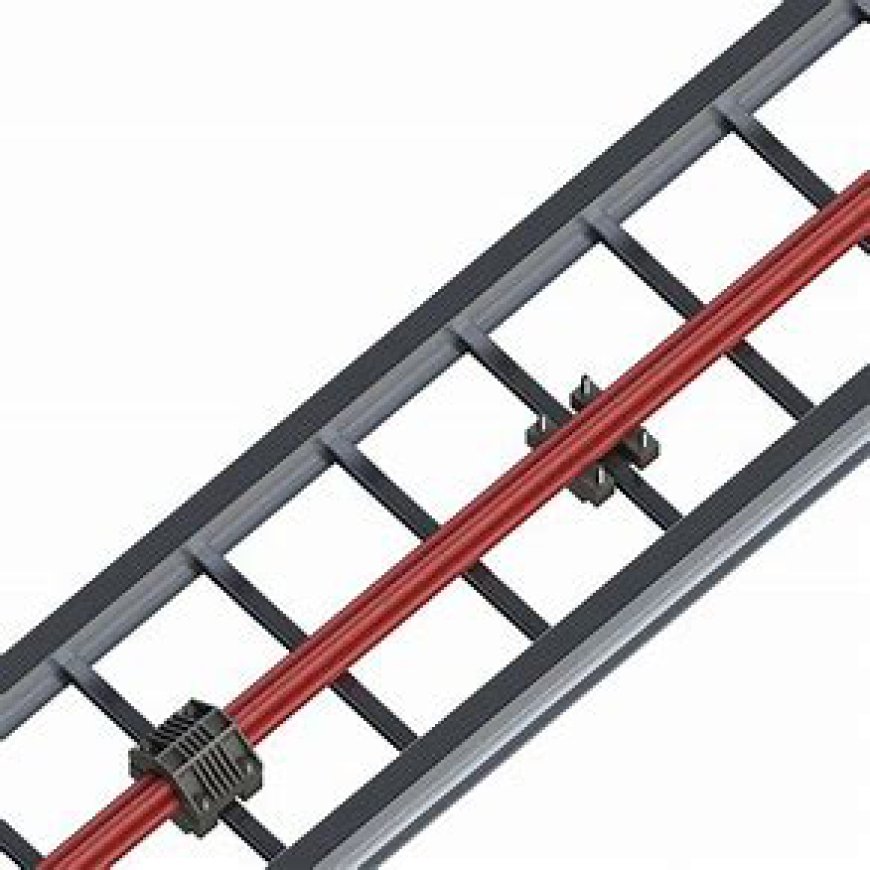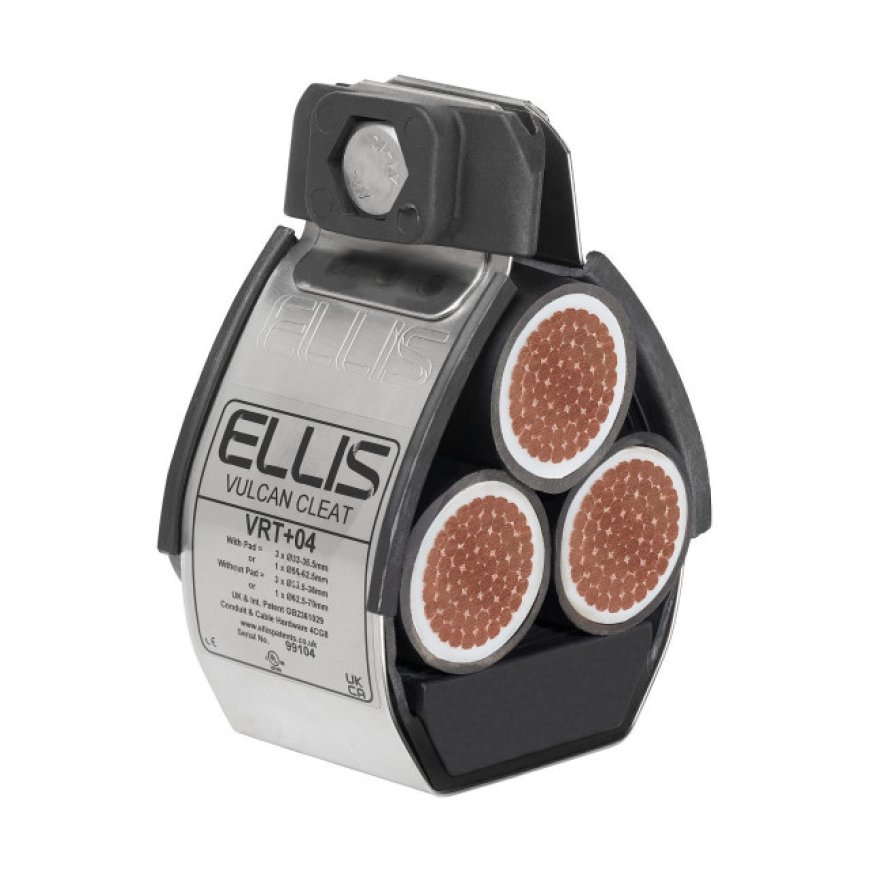Reliable Electrical Cable Cleats for Safe Cable Management
Meta Description: Learn how reliable electrical cable cleats can enhance the safety and organization of your cable management system. This beginner’s guide explains everything you need to know about choosing and using cable cleats for optimal electrical safety.
When it comes to electrical systems, one of the most important yet overlooked components is the cable cleat. While cables themselves carry the power, it’s the electrical cable cleats that keep everything organized, safe, and secure. But what exactly are these cleats? Why are they so crucial to cable management? And how can you choose the right one for your needs?
If you're new to electrical installations or simply want to learn more about securing your cables, this beginner’s guide will walk you through everything you need to know about cable cleats. By the end of this article, you’ll understand their importance and how they can improve both the safety and efficiency of your electrical system.
What Are Electrical Cable Cleats?
Before we dive into why they’re so important, let’s first understand what electrical cable cleats are. Put simply, cable cleats are devices designed to secure and support cables, keeping them in place and protecting them from damage. These cleats are especially critical in environments where cables are subject to vibrations, movement, or even environmental stresses like extreme temperatures or moisture.
Cable cleats come in various materials—like plastic, aluminum, and stainless steel—each tailored to different applications. For example, in industrial settings where cables carry high currents or are exposed to harsh conditions, heavy-duty metal cleats are often used. On the other hand, smaller plastic cleats may be ideal for lighter, low-voltage applications.
In short, cable cleats are the unsung heroes of your electrical setup, silently doing the job of keeping your cables organized and secure.
Why Are Cable Cleats So Important?
Now that we know what cable cleats are, you may be wondering why they’re so essential. Couldn’t you just let the cables lie in place? The short answer: No. Here’s why.
Cables, especially in industrial or commercial settings, are often subjected to mechanical stress. Whether it’s from vibrations caused by nearby machinery, the electromagnetic forces generated during a short circuit, or the natural effects of gravity, cables can shift. When cables move, they risk being damaged, which could lead to system malfunctions, short circuits, or even fires.
Using electrical cable cleats helps prevent this by holding cables firmly in place. This reduces wear and tear, minimizes the risk of accidents, and ensures that the electrical system remains safe and efficient.
Additionally, well-secured cables are easier to maintain and inspect. If you’ve ever worked with tangled or loose cables, you know how difficult it can be to trace a specific wire or diagnose an issue. Cleats keep everything organized, making future maintenance simpler and quicker.
3. Types of Electrical Cable Cleats
Just like there are many types of cables, there are various kinds of cable cleats designed to suit different needs. Understanding these options can help you select the right cleat for your specific situation. Here are some common types:
- Single Cable Cleats: As the name suggests, these cleats are designed to hold individual cables in place. They’re commonly used in installations where cables are laid out separately and need individual support.
- Trefoil Cable Cleats: These cleats are used to secure three cables that are arranged in a trefoil formation. This is particularly useful in high-voltage systems because the trefoil arrangement helps to minimize electromagnetic interference.
- Heavy-Duty Cable Cleats: Made from robust materials like stainless steel, these cleats are built to withstand extreme mechanical stresses, making them ideal for industrial applications where cables are exposed to harsh conditions.
- Fire-Resistant Cable Cleats: In areas where fire safety is a concern, these cleats are made from materials that won’t ignite or melt under high temperatures, providing added protection for your cables.
Each of these cleats has a specific purpose, and choosing the right one can make a big difference in the safety and efficiency of your electrical system.
4. How to Choose the Right Cable Cleats for Your System
Choosing the right cable cleats isn’t as simple as picking the first one you see. Several factors need to be considered to ensure you select the right cleat for your specific setup. Here’s what to keep in mind:
- Cable Size: The first and most obvious factor is the size of the cable. You need to choose a cleat that matches the diameter of your cable. Using a cleat that’s too small could compress the cable, while one that’s too large won’t provide proper support.
- Environmental Conditions: Are your cables installed indoors or outdoors? Will they be exposed to moisture, UV rays, or extreme temperatures? For outdoor installations, you’ll want UV-resistant cleats, and for harsh industrial settings, opt for heavy-duty electrical cable cleats.
- Voltage and Current Levels: If you’re working with high-voltage cables, you may need specialized cleats like trefoil cable cleats to help manage the electromagnetic forces generated.
- Fire Resistance: In some settings, fire safety is a top priority. If your installation is in such an environment, consider using fire-resistant electrical cable cleats.
By keeping these factors in mind, you can ensure that your cleats provide the necessary support and protection for your cables, optimizing the safety and reliability of your system.
5. How to Install Electrical Cable Cleats
Installing electrical cable cleats is a relatively simple process, but getting it right is crucial for ensuring the safety and longevity of your electrical system. Here’s a step-by-step guide to help you install them correctly:
Step 1: Measure and Mark
Before installing the cleats, measure the distance between each one. Cable cleats should be spaced at regular intervals to ensure even support along the length of the cable. Mark where each cleat will go.
Step 2: Position the Cleat
Place the cleat around the cable and ensure it is correctly aligned. For trefoil cleats, make sure the three cables are arranged in the proper formation.
Step 3: Secure the Cleat
Using screws or bolts (depending on the cleat type), fasten the cleat to its mounting surface. Make sure it’s tightly secured but not so tight that it compresses the cable insulation.
Step 4: Inspect
After installation, double-check that all cleats are properly secured and that the cables are held firmly in place. Loose cleats can lead to cable movement, which defeats the purpose of installing them.
Following these steps will help ensure that your electrical cable cleats are installed correctly and will provide the maximum level of safety and support for your cables.
6. Maintenance Tips for Long-Lasting Cable Cleats
While cable cleats are built to last, regular maintenance is key to ensuring they continue to perform well over time. Here are some simple tips for keeping your cleats in top condition:
- Regular Inspections: Periodically inspect your cable cleats for signs of wear, corrosion, or damage. This is especially important for outdoor installations or in harsh environments.
- Check Tightness: Over time, cleats can loosen due to vibrations or environmental factors. Make it a habit to check that all cleats are securely fastened.
- Clean Regularly: In dusty or dirty environments, clean your cleats to prevent debris from interfering with their function.
- Replace Damaged Cleats: If you notice any damaged or worn cleats, replace them immediately to avoid compromising the safety of your electrical system.
By following these maintenance tips, you can extend the life of your cable cleats and ensure that your cables remain safe and secure.
Conclusion

In conclusion, electrical cable cleats play a vital role in maintaining the safety and efficiency of your electrical system. They prevent cable movement, reduce wear and tear, and ensure that your cables remain organized and protected. Whether you’re installing a small home system or managing a large industrial setup, using the right cleats is essential.
From trefoil cable cleats for high-voltage systems to fire-resistant cleats for added safety, there’s a cleat for every need. By understanding the different types of cleats, how to choose the right one, and how to install and maintain them properly, you can optimize your cable management system for long-term success.
Remember, securing your cables with reliable cable cleats is a small investment that can pay off in improved safety, reduced maintenance costs, and longer-lasting electrical systems.

